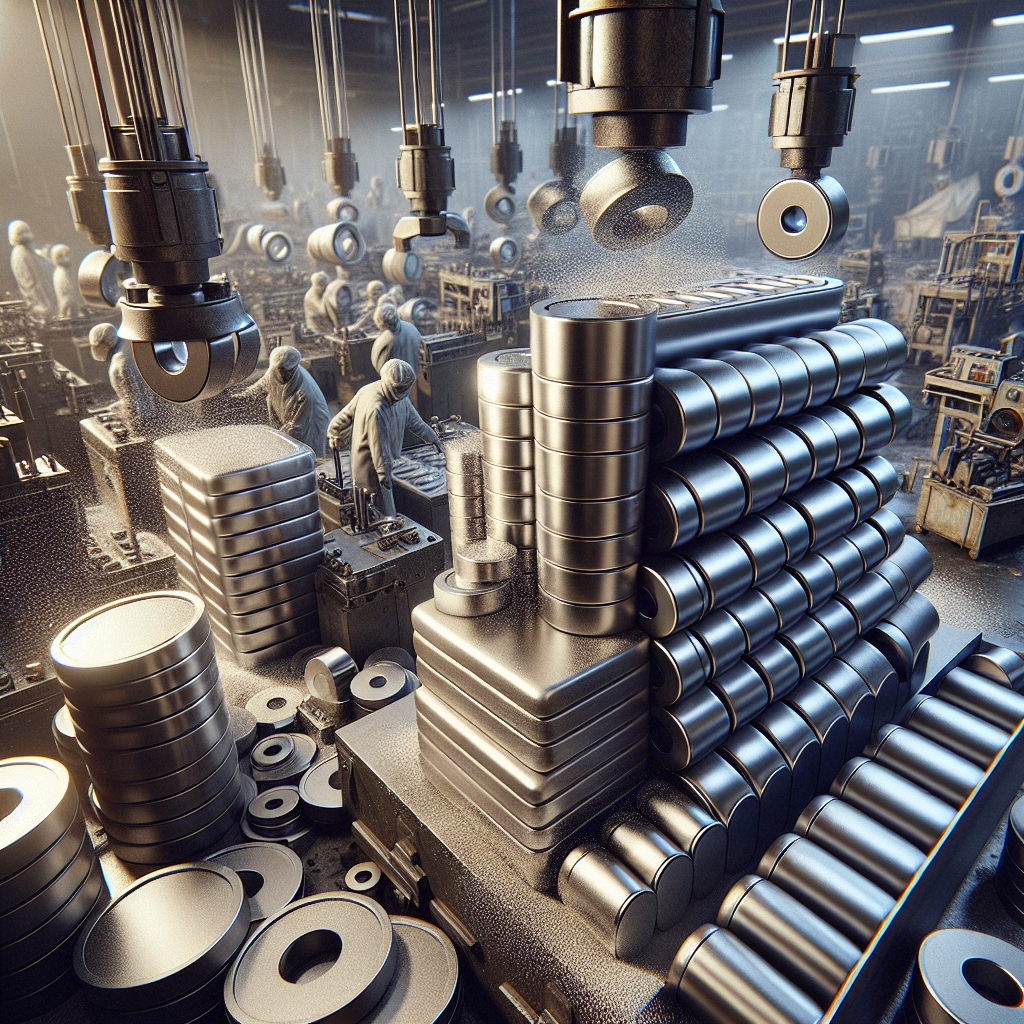Neodymium magnets, known for their exceptional strength and magnetic properties, have become indispensable in modern technology. Found in everything from hard drives and headphones to electric vehicles and wind turbines, these powerful magnets are a cornerstone of many contemporary applications. This article delves into the fascinating process of how neodymium magnets are made, exploring the materials used, the manufacturing process, and the challenges faced during production. Understanding the creation of these magnets not only highlights the complexities involved but also underscores the importance of neodymium in advancing technological innovation.
Chapter 1: The Raw Materials
The journey of creating a neodymium magnet begins with its raw materials. Primarily, these magnets are composed of neodymium, iron, and boron (NdFeB). However, the process also involves several other elements that enhance the magnet’s properties. The key materials include:
- Neodymium (Nd): A rare earth metal, neodymium is the primary component that gives these magnets their exceptional magnetic properties.
- Iron (Fe): Iron is used to provide the magnet with its structure and contributes to its strength.
- Boron (B): Boron is added to the mix to help stabilize the magnetic properties at higher temperatures.
- Dysprosium (Dy) and Terbium (Tb): These elements are sometimes added in small amounts to improve the magnet’s performance at high temperatures.
The extraction and preparation of these materials are critical steps that significantly impact the quality of the final magnet. Neodymium, being a rare earth metal, is primarily sourced from mines in China, the United States, Brazil, India, Sri Lanka, and Australia. The extraction process involves separating the neodymium from other rare earth elements and impurities, a task that requires precise chemical processing.
Chapter 2: The Manufacturing Process
Once the raw materials are prepared, they undergo a complex manufacturing process to become neodymium magnets. This process can be broadly divided into several key stages:
- Alloying: The first step involves melting the neodymium, iron, and boron together with any other additive elements under a vacuum or inert gas atmosphere. This alloying process ensures the elements are thoroughly mixed to form a uniform composition.
- Milling: The alloy is then cooled and broken down into smaller particles. This is typically achieved through a process called jet milling, which reduces the alloy into a fine powder. The particle size and distribution are crucial for determining the magnet’s final magnetic properties.
- Pressing: The powder is then compacted into a desired shape using one of two methods: isostatic pressing or die pressing. Isostatic pressing involves applying pressure evenly from all directions in a liquid medium, while die pressing applies pressure in a single direction. The method chosen depends on the desired magnet shape and size.
- Sintering: After pressing, the compacted material is heated to a temperature below its melting point in a process called sintering. This step densifies the material, enhancing its magnetic properties. The sintering process must be carefully controlled to prevent defects and achieve the desired magnet characteristics.
- Magnetizing: The final step involves exposing the sintered magnet to a strong magnetic field, which aligns the magnetic domains within the material, thereby magnetizing it. The strength of the magnetic field used in this process determines the magnet’s final magnetic properties.
This manufacturing process requires precise control and monitoring at each step to ensure the magnets meet the required specifications. The complexity of the process, combined with the need for high purity and quality of the raw materials, makes the production of neodymium magnets a challenging task.
Chapter 3: Challenges and Innovations
The production of neodymium magnets faces several challenges, primarily related to the availability of raw materials and environmental concerns. The extraction of neodymium and other rare earth metals is often associated with significant environmental impact, including pollution and habitat destruction. Moreover, the concentration of rare earth mining in specific regions poses supply chain risks and geopolitical tensions.
To address these challenges, researchers and manufacturers are exploring several innovative approaches:
- Recycling: Efforts are being made to develop efficient recycling processes for neodymium magnets. This not only reduces the demand for raw materials but also minimizes environmental impact.
- Alternative Materials: Research is ongoing to find alternative materials that can either replace neodymium or reduce the amount needed in the magnets. Such materials could potentially offer similar magnetic properties with less environmental and geopolitical concerns.
- Process Improvements: Continuous improvements in the manufacturing process aim to increase efficiency, reduce waste, and lower the environmental footprint of magnet production.
In conclusion, the production of neodymium magnets is a complex and challenging process that involves careful selection of raw materials, precise manufacturing techniques, and ongoing innovation to overcome environmental and supply chain hurdles. As technology continues to evolve, the demand for these powerful magnets is likely to grow, underscoring the importance of sustainable and efficient production methods.

